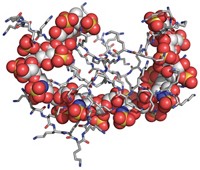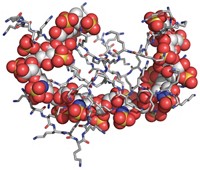Advertisement
Grab your lab coat. Let's get started
Welcome!
Welcome!
Create an account below to get 6 C&EN articles per month, receive newsletters and more - all free.
It seems this is your first time logging in online. Please enter the following information to continue.
As an ACS member you automatically get access to this site. All we need is few more details to create your reading experience.
Not you? Sign in with a different account.
Not you? Sign in with a different account.
ERROR 1
ERROR 1
ERROR 2
ERROR 2
ERROR 2
ERROR 2
ERROR 2
Password and Confirm password must match.
If you have an ACS member number, please enter it here so we can link this account to your membership. (optional)
ERROR 2
ACS values your privacy. By submitting your information, you are gaining access to C&EN and subscribing to our weekly newsletter. We use the information you provide to make your reading experience better, and we will never sell your data to third party members.
Materials
Compound Reverses The Anticlotting Effects Of Heparin
Translational Medicine: Antidote shuts down anticoagulation of all clinically available heparins
by Celia Henry Arnaud
October 30, 2014
| A version of this story appeared in
Volume 92, Issue 44
To prevent blood clots during procedures such as heart surgery, doctors administer the anticoagulant heparin. In some cases—particularly overdoses—physicians need an “antidote” that binds to heparin and reverses its activity.
A research team led by Jayachandran N. Kizhakkedathu of the University of British Columbia recently designed a reversal agent for heparin (Sci. Transl. Med. 2014, DOI: 10.1126/scitranslmed.3009427). The only compound currently approved to counteract heparin is a cationic protein called protamine sulfate, but it has its drawbacks. The new agent succeeds where protamine sulfate falls short because it neutralizes the activity of all forms of heparin, a mixture of highly sulfated glycosaminoglycans of different lengths.
Protamine effectively neutralizes unfractionated heparin, but it doesn’t work against the more commonly administered low-molecular-weight heparins or the synthetic heparin fragment fondaparinux. “Protamine neutralizes unfractionated heparin by electrostatic binding,” says Kizhakkedathu, an associate professor of chemistry and of pathology and laboratory medicine. “The binding strength is not sufficient at physiological conditions to neutralize low-molecular-weight heparins and fondaparinux.”
To make their reversal agent, Kizhakkedathu and his team synthesized a polyglycerol-based branched scaffold, which they capped with polyethylene glycol to improve biocompatiblity. Then they attached methylated branched amines, which are positively charged and therefore bind to negatively charged heparin.
The researchers made reversal agents with different scaffold sizes and numbers of heparin-binding groups. The best combination consists of a 23,000-dalton scaffold decorated with 20 heparin-binding groups for optimal binding strength and biocompatibility.
The researchers tested the toxicity of the reversal agent in mice and tested its efficacy in mice and rats. The reversal agent neutralized all heparins commonly used by doctors. They plan to test the compound in pigs and nonhuman primates.
Protamine sulfate has also been associated with allergic reactions. “This universal antidote has the potential to eliminate the allergic reactions associated with protamine and to reverse all heparin preparations,” says Jeffrey Weitz, an expert on blood coagulation at McMaster University in Hamilton, Ontario. “The results are important.”






Join the conversation
Contact the reporter
Submit a Letter to the Editor for publication
Engage with us on Twitter